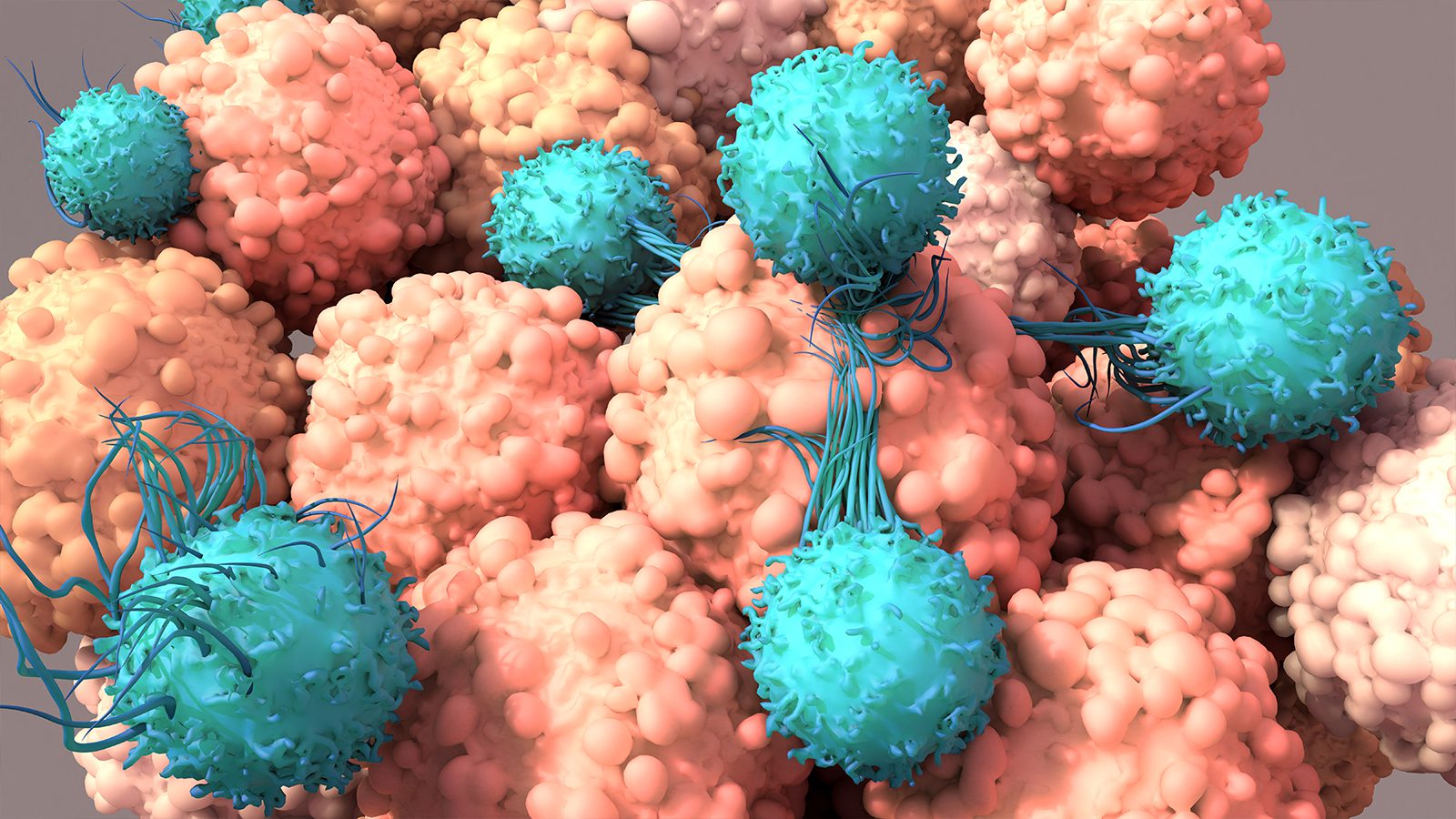Northwestern University scientists have found a cancer kill code in the body that could eliminate the need for chemotherapy. Every cell in the body comes equipped with this kill switch to destroy cancerous cells.
When the “kill switch” begins to detect cancer in any of the body’s cells, it uses this code to eradicate it. Both small ribonucleic acids (RNAs) and large protein-coding RNAs have the cancer elimination code embedded in them.
Scientists believe that microRNAs developed the cancer kill switch over 800 million years ago as a survival mechanism. This natural defense helps protect the body from cancer, but chemotherapy also triggers these small RNA molecules.
When cancer comes in contact with damaging RNAs, it can’t adapt or survive. Therefore, Northwestern University scientists believe a synthetic duplication could be a viable treatment in the future. Their study marks the first discovery that cancer cells cannot resist microRNA molecules.
“Now that we know the kill code, we can trigger the mechanism without having to use chemotherapy and without messing with the genome. We can use these small RNAs directly, introduce them into cells and trigger the kill switch,” said the lead author Marcus E. Peter, the Tomas D. Spies Professor of Cancer Metabolism at Northwestern University Feinberg School of Medicine.
Chemotherapy can result in many unwanted side effects, including causing additional cancers. This happens because it attacks both healthy and unhealthy cells. However, a natural treatment using microRNA would have a more targeted approach.
Through their research, the scientists determined that small RNA molecules kill cancer cells in a process called DISE. This stands for Death by Induced Survival gene Elimination.
When the team examined noncoding RNA molecules that inhibit gene expression, they found DISE nucleotide sequences on many RNA strands. They also found the same sequences embedded in many protein-coding molecules.
Scientists Discover Cancer Kill Code That May Replace Chemotherapy

“We found weapons that are downstream of chemotherapy,” noted Peter, a member of the Robert H. Lurie Comprehensive Cancer Center of Northwestern University.
“We think this is how multicellular organisms eliminated cancer before the development of the adaptive immune system, which is about 500 million years old,” Peter said in a statement in 2017. “It could be a fail-safe that forces rogue cells to commit suicide. We believe it is active in every cell, protecting us from cancer.”
However, they still needed to determine what caused the cells to self-destruct. The team found that a sequence of six nucleotides (6mers) in small RNAs created a toxic environment for cancer. Nucleotides are present in both DNA as G, C, A, or T and U in RNA.
In the study, Peter and his team tested all 4,096 combinations of nucleotide sequences in the 6mers. They finally determined the most harmful combination included mostly G nucleotides. MicroRNAs use this 6mer to eliminate cancer cells in the body.
The research on how the microRNAs use the kill switch to extinguish cancer cells was published in Nature Communications. Peter and his team also did a subsequent study detailing how protein-coding large RNAs can convert to small RNAs.
They wanted to determine how the body develops microRNAs that activate the DISE sequence. In the second study, the team determined that our cells break down a more significant RNA strand into multiple microRNAs.
The cells chop a gene involved in tumor growth (Fas ligand) into small pieces that act as toxins to cancer. Peter’s team found that around 3% of all large protein-coding RNAs in the genome can trigger DISE.
That research was published in the journal eLife.
“Based on what we have learned in these two studies, we can now design artificial microRNAs that are much more powerful in killing cancer cells than even the ones developed by nature,” Peter said.
The Future of the Cancer Treatment
“We absolutely need to turn this into a novel form of therapy,” Peter added. He and his team have begun investigating ways to trigger a cancer kill switch. However, he notes that a possible treatment may take decades to develop.
The Northwestern team published groundbreaking research in Oncotarget in 2017 on a potential therapy. They utilized nanoparticles to transfer DISE microRNAs to human ovarian cancer cells grafted in mice.
Remarkably, the treatment reduced tumor growth dramatically without any dangerous side effects. The team hopes to increase the efficiency of the treatment in the future.
“My goal was not to come up with a new artificial toxic substance,” Peter said. “I wanted to follow nature’s lead. I want to utilize a mechanism that nature developed.”
He added that even newer, more advanced medications and gene therapies couldn’t eradicate aggressive cancers. For example, pancreatic, lung, brain, and ovarian cancers don’t respond well to gene therapy.
This treatment can only target one gene simultaneously, even though several genes cause cancer. However, the DISE microRNA approach can treat multiple genes simultaneously to eliminate even serious cancers.
Hopefully, the treatment will become available shortly. Peter and his team will continue researching ways to improve the therapy. They hope it will affect many types of cancer by eliminating it at the source.
In many ways, returning to nature would positively impact our mental and physical well-being.
Final Thoughts on Cancer Kill Switch Found in RNA Molecules
Northwestern University scientists have made notable progress in cancer research in the past five years. They have discovered a cancer “kill switch” embedded in microRNAs and larger protein-coding RNAs.
In several studies, the team found that when cancer comes into contact with these molecules, it cannot survive.
The body developed this survival tactic against cancer over 800 million years ago, which still exists today. Scientists hope creating a synthetic replica of this natural process will eradicate many cancers.
They have already proven that DISE microRNA treatment can reduce human ovarian tumors. The next step will be perfecting the therapy and making it commercially available. Perhaps in the next several decades, cancer will become a disease of the past.





















